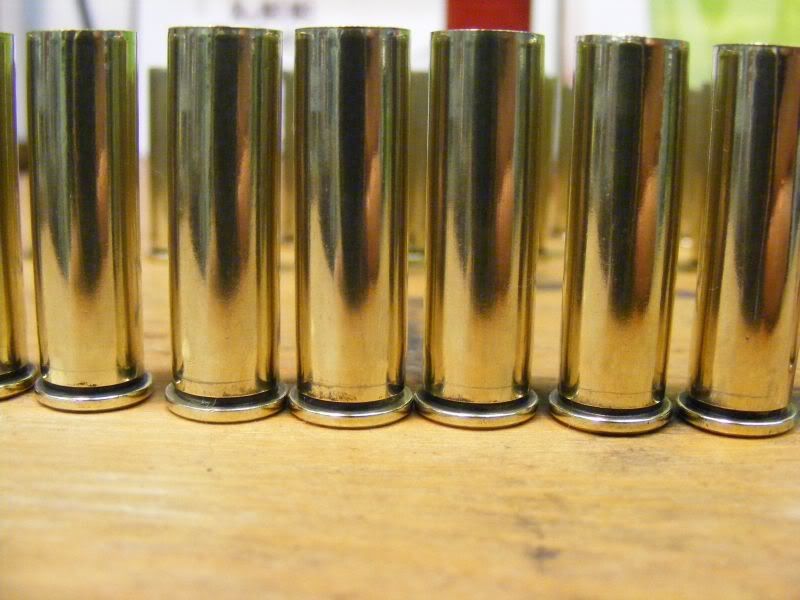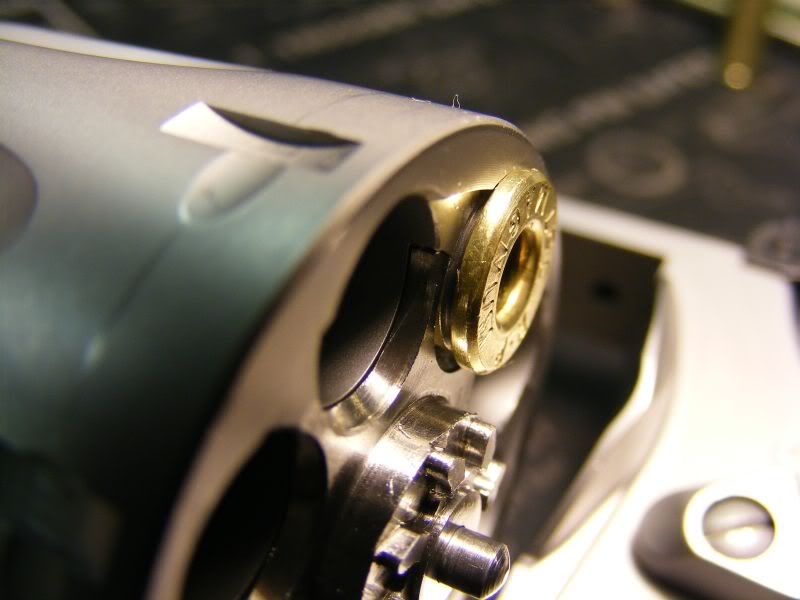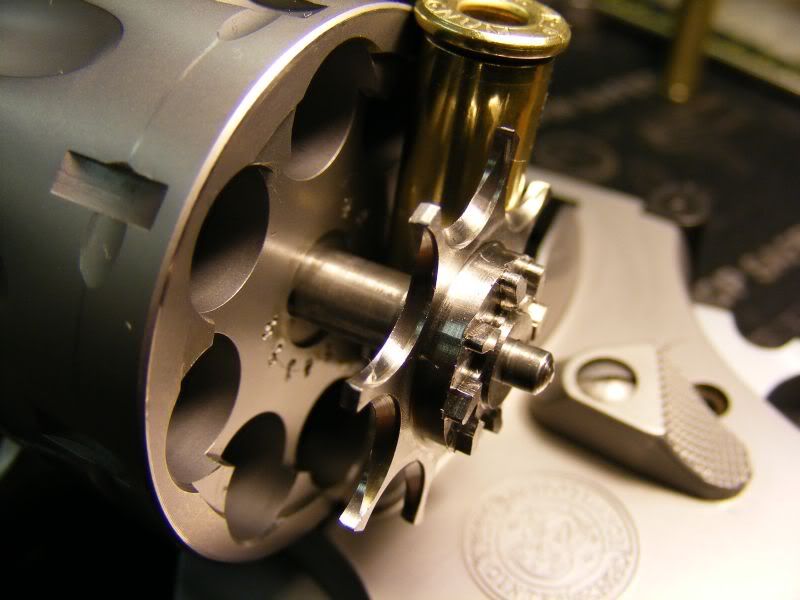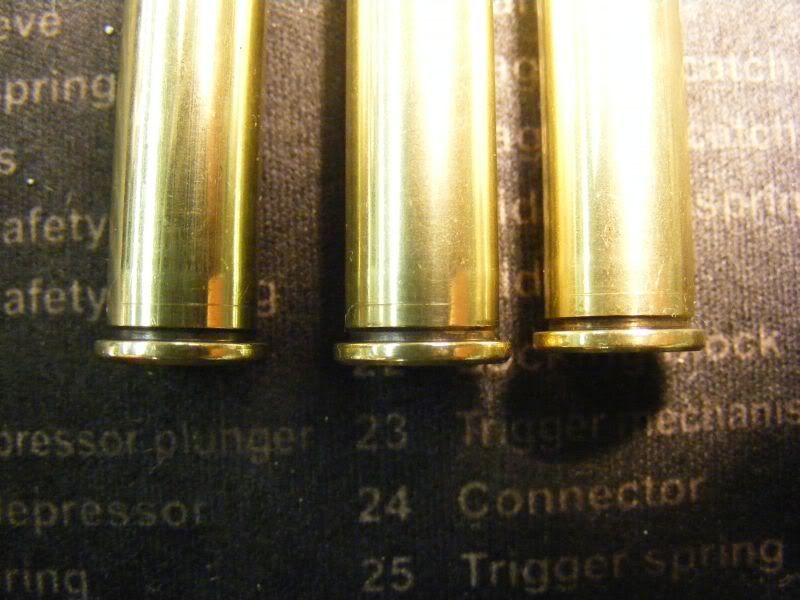I was inspecting .357 brass that I shot yesterday with my 627 and 686 revolvers. This is the third time this brass has been used. I shoot the 627 without the aid of moon-clips. The 686 does not support moon clips. I noticed rings about the head on most of the brass. The rings do not go completely around the case but extend for maybe 1/4" the diameter of the case. The lines are approximately 0.14" below primer side of the rim. The lines do not display the "bright ring warning sign" of case separation but rather look like scribed cuts made with a blade.
See pic

I placed an empty case in the cylinder. It appears to me that the cuts were made from the ejector. The ejector has a wedge shaped edge. The edge is sharp. The marks on the case appear to coincide with the sharp edge of the ejector. It appears that as the gasses expand the case, the case imbeds itself into the sharp edge of the ejector. The mark is then imprinted or cut into the case. Side Note: Notice there is a portion of the case that is not supported? Something to keep in mind.
See Pic

See Pic

Apparently, this has to weaken the head of the case. Does anyone have more information? Would you keep reloading these marked or scribed cases?
See pic

I placed an empty case in the cylinder. It appears to me that the cuts were made from the ejector. The ejector has a wedge shaped edge. The edge is sharp. The marks on the case appear to coincide with the sharp edge of the ejector. It appears that as the gasses expand the case, the case imbeds itself into the sharp edge of the ejector. The mark is then imprinted or cut into the case. Side Note: Notice there is a portion of the case that is not supported? Something to keep in mind.
See Pic

See Pic

Apparently, this has to weaken the head of the case. Does anyone have more information? Would you keep reloading these marked or scribed cases?

